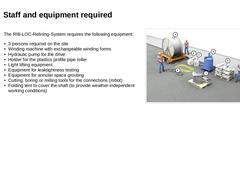
|

| (Image: Equipment for lining with site manufactured pipes with anular space)
The RIB-LOC-Relining-System requires the following equipment: - 3 persons required on the site
- Winding machine with exchangeable winding forms
- Hydraulic pump for the drive
- Holder for the plastics profile pipe roller
- Light lifting equipment
- Equipment for leaktightness testing
- Equipment for annular space grouting
- Cutting, boring or milling tools for the connections (robot)
…
|
|
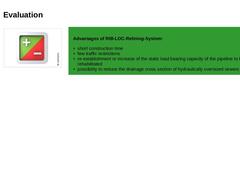
|

| (Image: Pros and cons)
|
Advantages of RIB-LOC-Relining-System: - short construction time
- few traffic restrictions
- re-establishment or increase of the static load bearing capacity of the pipeline to be rehabilitated
- possibility to reduce the drainage cross section of hydraulically oversized sewers
|
|
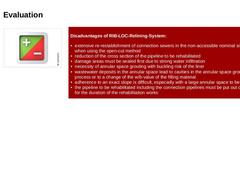
|

| (Image: Pros and cons) |
Disadvantages of RIB-LOC-Relining-System: - extensive re-restablishment of connection sewers in the non-accessible nominal size area when using the open-cut method
- reduction of the cross section of the pipeline to be rehabilitated
- damage areas must be sealed first due to strong water infiltration
- necessity of annular space grouting with buckling risk of the liner
- wastewater deposits in the annular space lead to cavities in the …
|
|
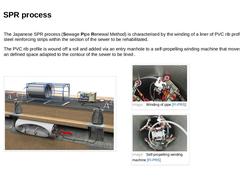
|

|
The Japanese SPR process (Sewage Pipe Renewal Method) is characterised by the winding of a liner of PVC rib profiles with steel reinforcing strips within the section of the sewer to be rehabilitated. The PVC rib profile is wound off a roll and added via an entry manhole to a self-propelling winding machine that moves along an defined space adapted to the contour of the sewer to be lined . | | (Image: Spiral lining process RotaLoc with reference to [FI-… |
|
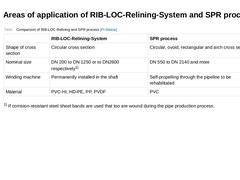
|

(Table: Comparsion of RIB-LOC-Relining and SPR process [FI-Steina]) |
|
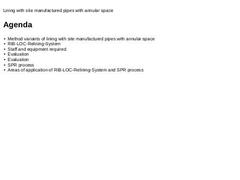
|

|
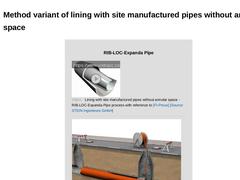
|

| RIB-LOC-Expanda Pipe |
(Video: Lining with site manufactured pipes without annular space - RIB-LOC-Expanda-Pipe process with reference to [FI-Preus] [Image: S&P GmbH])
|
|
(Image: RIB-LOC-Expanda Pipe - Working phase 2: Expanding the lining pipe by pulling the enclosed wire rope (working step 2))
|
| |
|
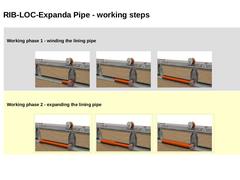
|

| Working phase 1 - winding the lining pipe |
(Image: RIB-LOC-Expanda Pipe - Working phase 1: Winding of the lining pipe from starting manhole to target manhole (working step 1))
|
(Image: RIB-LOC-Expanda Pipe - Working phase 1: Winding of the lining pipe from starting manhole to target manhole (working step 2))
|
(Image: RIB-LOC-Expanda Pipe - Working phase 1: Winding of the lining pipe from starting manhole to target manhole (working step 3))
|
| Working … |
|
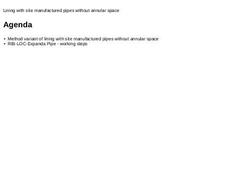
|

|
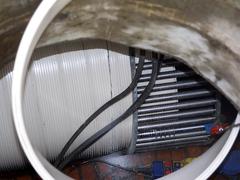
|

The lecture deals with the method variants and the application areas of lining with spirally-wound pipes. |
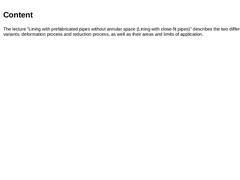
|

The lecture "Lining with prefabricated pipes without annular space (Lining with close-fit pipes)" describes the two different method variants, deformation process and reduction process, as well as their areas and limits of application. |
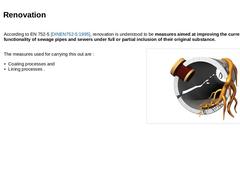
|

|
According to EN 752-5 [DINEN752-5:1995], renovation is understood to be measures aimed at improving the current functionality of sewage pipes and sewers under full or partial inclusion of their original substance. | |
The measures used for carrying this out are : - Coating processes and
- Lining processes .
| (Image: Damages)
|
|
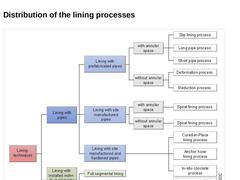
|

| (Image: Distribution of the lining processes)
|
|
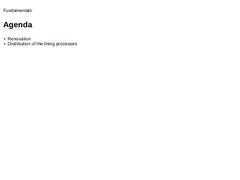
|

|
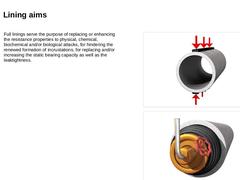
|

|
Full linings serve the purpose of replacing or enhancing the resistance properties to physical, chemical, biochemical and/or biological attacks, for hindering the renewed formation of incrustations, for replacing and/or increasing the static bearing capacity as well as the leaktightness. | |
(Image: Structural calculation)
|
|
(Image: Leaktightness)
|
|
|
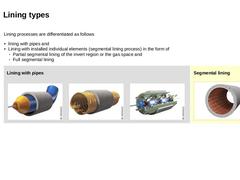
|

|
Lining processes are differentiated as follows - lining with pipes and
- Lining with installed individual elements (segmental lining process) in the form of
- Partial segmental lining of the invert region or the gas space and
- Full segmental lining
| Lining with pipes |
(Image: Lining with prefabricated pipes)
|
(Image: Lining with site manufactured pipes)
|
(Image: Lining with site manufactured and hardened pipes)
|
| Segmental lining (Image: Segmental lining)
|
|
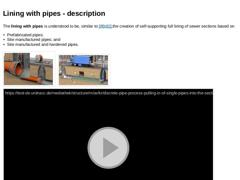
|

The lining with pipes is understood to be, similar to (not found),the creation of self-supporting full lining of sewer sections based on -
Prefabricated pipes;
-
Site manufactured pipes; and
-
Site manufactured and hardened pipes.
(Image: Depiction of the lining with site manufactured pipes (spiral lining process) using the RIB-LOC-Relining-System as an example with reference to [FI-RIBLOb] - Sketch of principle [Image: S&P GmbH]) (Image: Insertion of … |
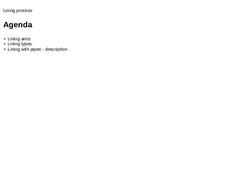
|

|
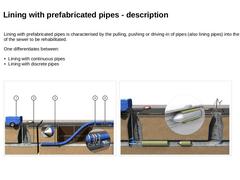
|

|
Lining with prefabricated pipes is characterised by the pulling, pushing or driving-in of pipes (also lining pipes) into the section of the sewer to be rehabilitated. One differentiates between: - Lining with continuous pipes
- Lining with discrete pipes
|
(Image: Conventional sliplining process with annular space with reference to [FI-Teerb] - Depiction of principle [Image: S&P GmbH])
|
(Image: Discrete pipe method - Pulling-in of discrete pipes into the … |
|
|
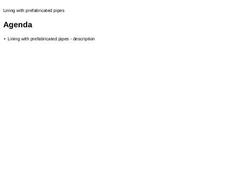
|

|
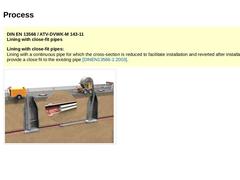
|

DIN EN 13566 / ATV-DVWK-M 143-11
Lining with close-fit pipes Lining with close-fit pipes:
Lining with a continuous pipe for which the cross-section is reduced to facilitate installation and reverted after installation to provide a close fit to the existing pipe [DINEN13566-1:2003]. | | (Image: Compact pipe process with reference to [FI-Wavin] - Pulling-in the C-shaped folded continuous pipe [Image: S&P GmbH])
|
|
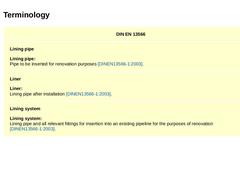
|

DIN EN 13566 | Lining pipe Lining pipe:
Pipe to be inserted for renovation purposes [DINEN13566-1:2003]. | Liner Liner:
Lining pipe after installation [DINEN13566-1:2003]. | Lining system Lining system:
Lining pipe and all relevant fittings for insertion into an existing pipeline for the purposes of renovation [DINEN13566-1:2003]. |
|
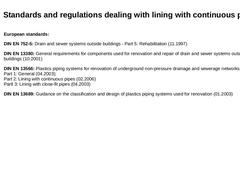
|

|
European standards: DIN EN 752-5: Drain and sewer systems outside buildings - Part 5: Rehabilitation (11.1997) DIN EN 13380: General requirements for components used for renovation and repair of drain and sewer systems outside buildings (10.2001) DIN EN 13566: Plastics piping systems for renovation of underground non-pressure drainage and sewerage networks
Part 1: General (04.2003);
Part 2: Lining with continuous pipes (02.2006)
Partl 3: Lining with … |
|
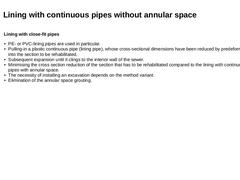
|

|
Lining with close-fit pipes - PE- or PVC-lining pipes are used in particular.
- Pulling-in a plastic continuous pipe (lining pipe), whose cross-sectional dimensions have been reduced by predeformations, into the section to be rehabilitated.
- Subsequent expansion until it clings to the interior wall of the sewer.
- Minimising the cross section reduction of the section that has to be rehabilitated compared to the lining with continuous pipes with annular …
|
|
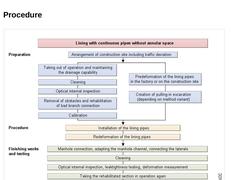
|

| (Image: Sequence diagram for renovation of drains and sewers with prefabricated pipes - Lining with continuous pipes without annular space)
|
|